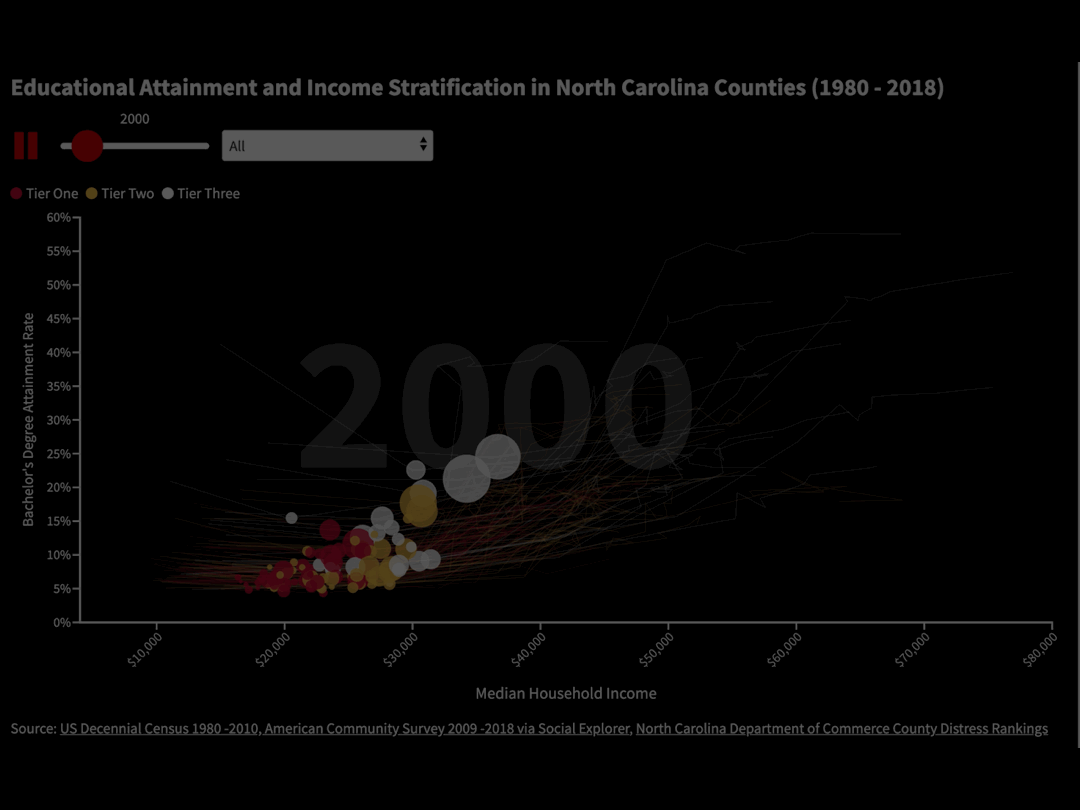As the state nears 25,000 COVID-19 cases, let’s not forget rural NC

Today North Carolina passed 24,000 positive COVID-19 cases. Twenty percent of those infections are in the state’s two most populous counties, Mecklenburg (3,403) and Wake (1,478). The country and the state have focused a lot of attention on the virus's rapid spread in population-dense and urban spaces. This framing, coupled with an initial lack of testing, has created the perception that rural North Carolina has not experienced COVID-19 like the rest of the country.
This could not be any more untrue.
In the North Carolina context, it appears that the rural counties have been harder hit. By examining COVID-19 infection and death rates instead of solely infection and death counts, one is able to scale impact relative to county population. Once viewed through this context, everything changes.
The state rate of COVID-19 infections is 229 per 100,000, while the crude death rate is 7.5 per 100,000. Counties classified as rural by the NC Rural Center’s methodology show an infection rate of 257 per 100,000 and a death rate of 8 per 100,000. For comparisons sake, urban/ suburban counties have an infection rate of 204 per 100,000 and a death rate of 7 per 100,000.
While these rate differences are not extreme, there are several hotspots in rural NC that are cause for real concern. Duplin and Wayne counties lead the state with 1121 and 837 COVID-19 cases per 100K. In terms of crude death rate (deaths per 100K), Northampton and Vance counties lead the state with 62 and 40 deaths per 100K, respectively. These are all rural counties, but the trend does not stop there. The 15 counties with the highest COVID-19 infection rate are rural, and 18 out of 20 counties with the highest COVID-19 death rates are also designated as rural.
There are several reasons that rural North Carolina is ill-positioned to respond to a pandemic. In the wake of North Carolina's refusal to expand Medicaid, seven rural hospitals have closed, leaving 17 counties without a state-licensed facility. These same rural counties generally have higher rates of uninsured, making it less likely people get treated for any disease, let alone COVID-19. Duplin, Greene, Swain, Sampson, Graham, and Robeson counties lead the state in the percent of county population uninsured, further complicating mitigative strategies against COVID-19 infection.
A potential contributor to NC COVID-19 infections in rural NC are occupational trends; that is, how people work in community. In places where economies are not particularly sophisticated, meat processing plants offer many residents the opportunity to earn a steady income and stability. However, in a pandemic, the close nature of meat processing work creates a liability for the workers, their families, and entire communities. Last week, NCDHHS announced that 13 counties had meat processing plants experiencing COVID-19 outbreaks. Twelve of the 13 counties are considered rural. After mapping these communities and the percentage of the county workforce employed in production occupations, four rural county clusters emerge as plausible connections between the concentration of meat processing plants and higher rates of infection per 100K. These are Cluster 1) Duplin, Sampson, Wayne, Wilson, Lenoir, and Greene, Cluster 2) Bertie, Northampton, and Halifax, Cluster 3) Chatham and Lee and Cluster 4) Wilkes, Surry, and Yadkin counties. While one would offer caution in arguing that a scientific relationship exists between communities with meat processing plants and COVID-19 infection rates, policymakers should be aware of potential impact.
As COVID-19 cases climb towards a 25,000, let us not lose focus on the particular pain rural communities in North Carolina are experiencing. All it takes is a deeper look.




